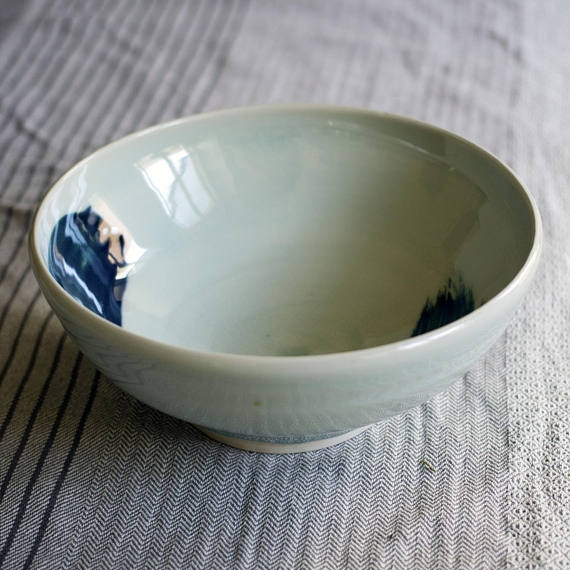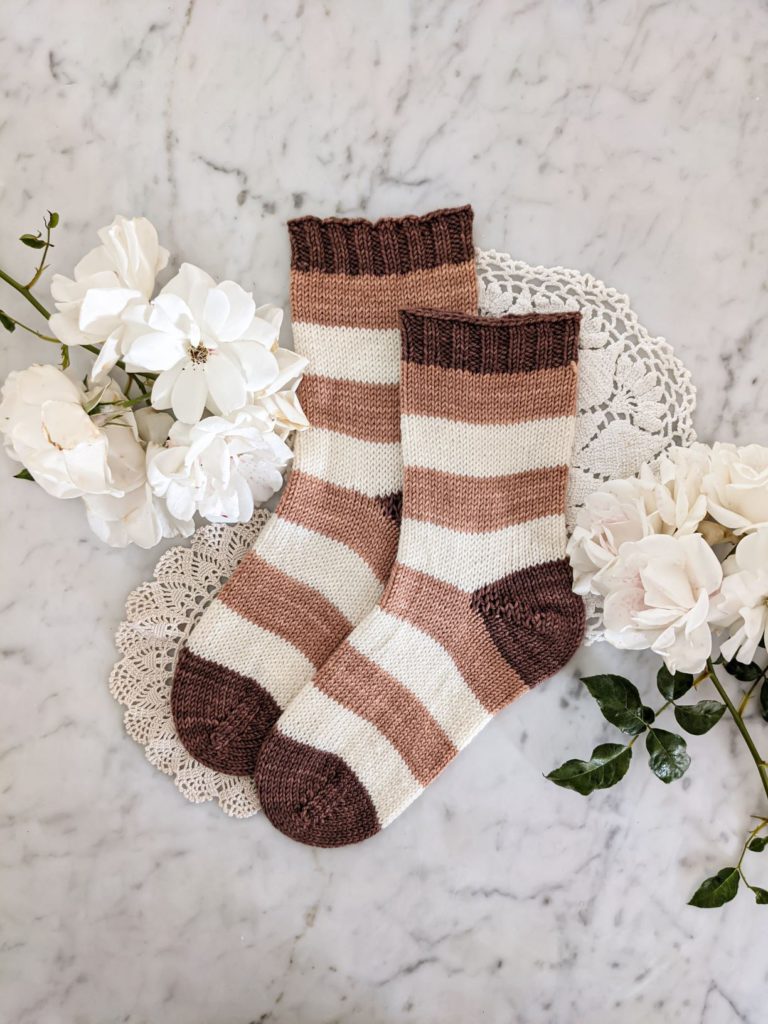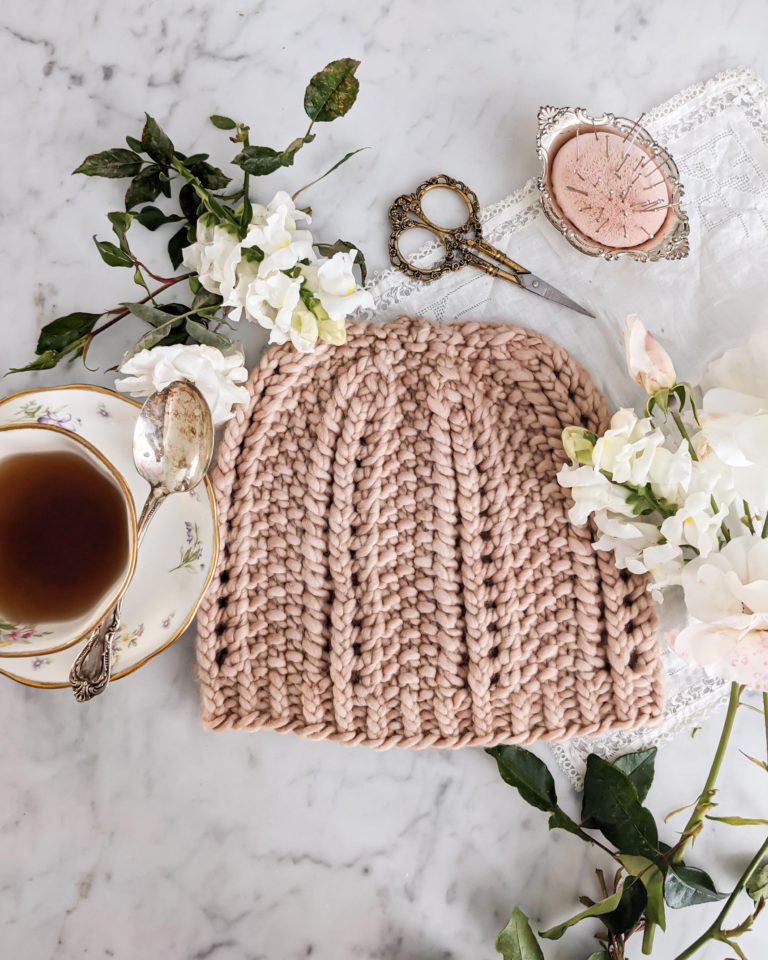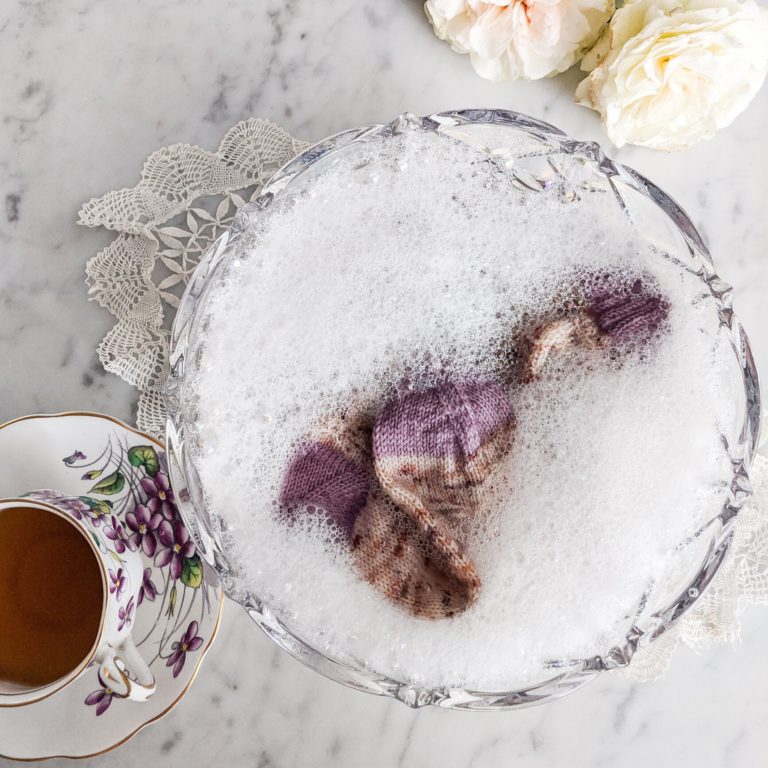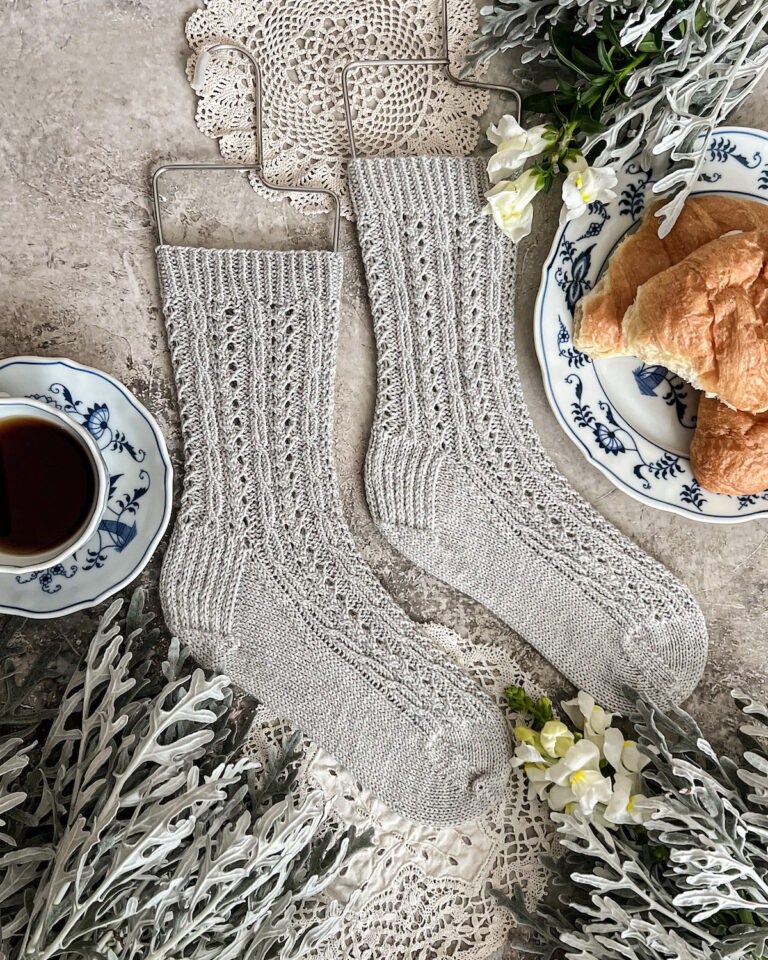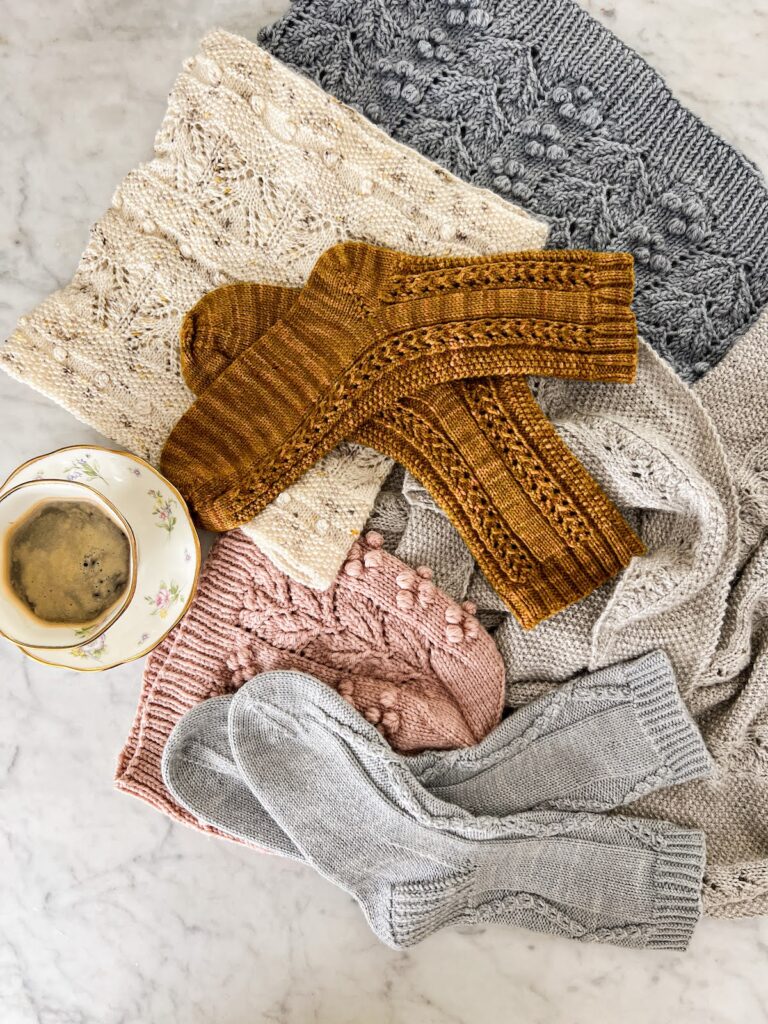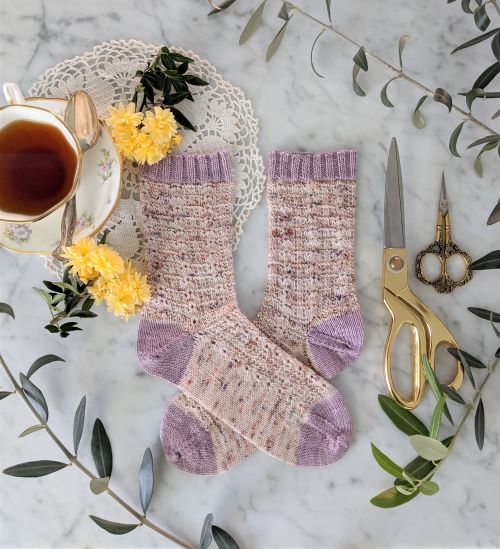
This month, I’ve talked a lot about the test knitter experience and how a test knitter is different from a tech editor. To round things out, I thought it would be a good idea to hear from a tech editor, too.
Enter Bonnie Davis, the wonderful tech editor who has shepherded my patterns into the world since March of 2020.
Bonnie and I crossed paths in a Facebook group called The Tech Editor Hub. I was just starting to take my design process more seriously, and I knew I needed to find a good tech editor to really make my patterns more professional. Bonnie was taking on new clients, so I sent her a message, and we tried out a test run together. The rest is history.
Here for your enjoyment is a look into how Bonnie got started, how to find and build a good working relationship with a tech editor, things to watch out for, and more. I hope it’s helpful to you.
How did you get started with tech editing? What drew you to it?
Tech editing piqued my interest when social media made possible the surge of independent designers. I didn’t have time to pursue that interest until I took early retirement to follow my husband across the country from Kentucky to Maryland after his job transfer. The move gave me more time for both knitting and an opportunity to explore tech editing. The field interested me as a means of combining my love of knitting with my background as a published writer.
What sort of training did you undertake to prepare for working as a tech editor?
I have a BA in English and had a few children’s stories published. This background has given me a solid grounding in practicing the mechanics of writing. Additionally, I completed The Tech Editor Hub course, and I’m currently working through the TKGA (The Knitting Guild Association) editing course. I strongly believe in continuing education to expand my knowledge of knitting techniques and familiarize myself with new trends such as inclusive sizing.
What do you wish designers knew about working with a tech editor?
Knitting designers are unique individuals with unique styles and goals. So are tech editors. Tech editors have specific training and skill sets that make them professionals. I frequently see posts from individuals offering tech editing services that state they have never done this but are sure their background in (insert whatever here) would qualify them. Maybe it does. But maybe it doesn’t. Everyone starts somewhere. I recommend reviewing a tech editor’s qualifications, experience, testimonials, etc.
What is your favorite part about tech editing?
My favorite part of tech editing is enjoying all the wonderful creativity I see. It’s crazy fun to open a new file and experience the creative mind at work. I truly wish for the time to knit every pattern I am privileged to edit. Alas….
What do you find most frustrating or difficult about tech editing?
Marketing. I am terrible at it. I have basic, only, social media skills. Unfortunately, that is where it’s at when it comes to building a client portfolio.
Do you have a philosophy underlying your tech editing approach? For example, I’ve noticed you’re really careful about preserving designer voice and are more interested in consistency than in enforcing rigid rules.
Thank you for noticing my insistence on preserving a designer’s style and voice. I think that is so important to a designer’s ability to display their uniqueness.
Consistency is one of my personal bugbears. But I want to point out that I mean internal consistency within a specific pattern, and (should a designer offer a portfolio of patterns) consistency that is maintained throughout their body of patterns. Consistency is not something a knitter would necessarily notice, but they sure notice if it is absent. Consistency equals professionalism.
Another of my philosophical approaches involves what I like to call “knitter friendliness” but can be equated with accessibility. For some designers, this might mean making a pattern accessible for low vision knitters. However, it is really much broader than that. It also involves including knitters with as many skill levels and styles as possible. Project knitters want concise, clear instructions that produce a finished project as effortlessly as possible. Process knitters want to explore new skills and techniques and might need additional assistance by way of explanations or links to explanations. I try to ensure that patterns work for both project and process knitters. Additionally, knitter friendly patterns reach more possible pattern purchasers.
Finally, I believe in approachability. I try to be as approachable as possible to my designers. Although, most of my interactions have been through email or text, I have also worked with new designers by phone to help alleviate any concerns. I also recommend that designers be approachable by knitters by offering their email, and social media information if a knitter needs assistance with one of their patterns.
Where do you recommend knitting designers look to find a good tech editor?
Social Media. Social Media. Social Media. That is where a huge percentage of business, tech editing or otherwise, takes place these days. About 30% of my designers come from Instagram, 30% from other media advertising including Ravelry, and 30 percent from word of mouth originating from satisfied designer clients, bless them. The other 10%? According to my website analytics, those contacts come from “direct” sources, most likely Google searches.
How do you gauge whether you and a particular designer have working styles that fit well together?
Tech editors want a good fit between themselves and a designer as much as a designer wants that. Research is paramount. A designer should start with social media but research in depth. Use social media to make a list of possibilities then explore websites. Tech editors explain their processes, list their preferred types of patterns and styles, give pricing information, show their experience and training, and offer testimonials.
Reach out to tech editors by email and ask for a chat or with specific questions. Talk with other designers that offer similar patterns to yours. Determine whether an editor does grading, schematics, or charting if you need those. Find out if the editors prefer only accessories or love editing garments. How soon do you need your pattern returned to you, and can the editor accommodate that? Are you needing a one-off edit or looking for a continued relationship? Are you an experienced designer or new designer, perhaps needing a bit of coaching? What does the tech editor specialize in?
For example, I offer tech editing over a broad spectrum of skill levels and pattern types. However, I also offer specialties in writing romance copy and pattern naming assistance. In the end, though, it may require a trial period to discover whether a designer and tech editor work well together—probably no more than a few patterns. By then, a designer will either be happy, or not, with the turn around time, billing process, professionalism, courtesy, and actual specific editing results. Ditto for the tech editor.
I can frequently tell from an initial email inquiry whether or not I can assist a designer from the type of edit they are requesting. I am always upfront with a designer about my abilities. I help develop style sheets, but I don’t write patterns for new designers. I am proficient at checking the math on already graded patterns, but I don’t do grading. And I don’t assist in helping someone adapt a published pattern for personal use, i.e. for converting a pullover to a cardigan. I have been asked to do all three.
I find that the best fit is achieved when a designer explains exactly what is needed and a tech editor explains exactly what they can or can’t assist with.
Are there any deal-breakers for you, that is, things that would make you decline to work for a designer or decide not to work with them again?
Deal breakers? Only once, that I can recall, has something occurred that caused me to determine that I would not work with a client again.
Many tech editors start by offering a free first edit in exchange for a testimonial. This helps to establish clients and frequently leads to a continued relationship. One of my first testimonials came from a new designer, also just starting out. So, the offer of a free edit worked for both of us. However, even though she provided a very nice testimonial, I didn’t hear from her for a while although I did see that she was actively offering new patterns on social media.
I assumed she had found another tech editor and thought nothing more about it.
Until…I offered a 3 for the price of 2 special on my website. She contacted me the next day. That’s fine. I understand that designers, especially new ones, need to be careful of money. However, she wanted to take 9 older patterns that had never been edited, and use my special offer to update all 9 patterns. In other words, 3 patterns for the price of 2, three times. Well, I had not anticipated that. But my offer didn’t specify a limit (lesson learned), so I reluctantly agreed to take on her request.
Except she still wasn’t satisfied and made several attempts to negotiate the pricing even lower. I came to realize that what she really wanted was a whole lot of something for a whole lot of nothing. I finally declined the entire deal. I don’t expect to hear from her again. Nor would I be likely to want to work with her.
Tech editors really do understand that our services can be expensive and that designers may not realize a large return on pattern sales. However, we are trained and dedicated to helping you achieve the best possible patterns for your knitters. Even simple, basic patterns can require hours to edit. And we don’t, can’t work for nothing.
What do you think are particular characteristics, skills, or interests that would make somebody well suited to life as a working tech editor?
To be a good tech editor, one needs patience and attention to detail, a desire to assist someone else, and a recognition that the someone else you are assisting will receive most, sometimes all, of the glory. I am fortunate to work with a few designers that generously recognize their tech editors when releasing new patterns. Tech editors need to enjoy working with people. I think one of the most importance characteristics is a willingness, a desire to continue to learn both new knitting techniques and media updates. A tech editor needs excellent written communication skills and a good eye to spot the difference between knit two, knit to, and knit too. Solid but basic math skills are helpful. A sense of humor is a must.
Let’s stay connected!
Join my newsletter for 30% off all new releases, regular updates with helpful tips and tricks, first crack at registration for upcoming workshops, exclusive discounts, and more.
Join the A Bee In The Bonnet Facebook Group to participate in knitalongs and other fun community events
Come hang out with me on the A Bee In The Bonnet TikTok
Follow along on the A Bee In The Bonnet Instagram
Get inspired via the A Bee In The Bonnet Pinterest

